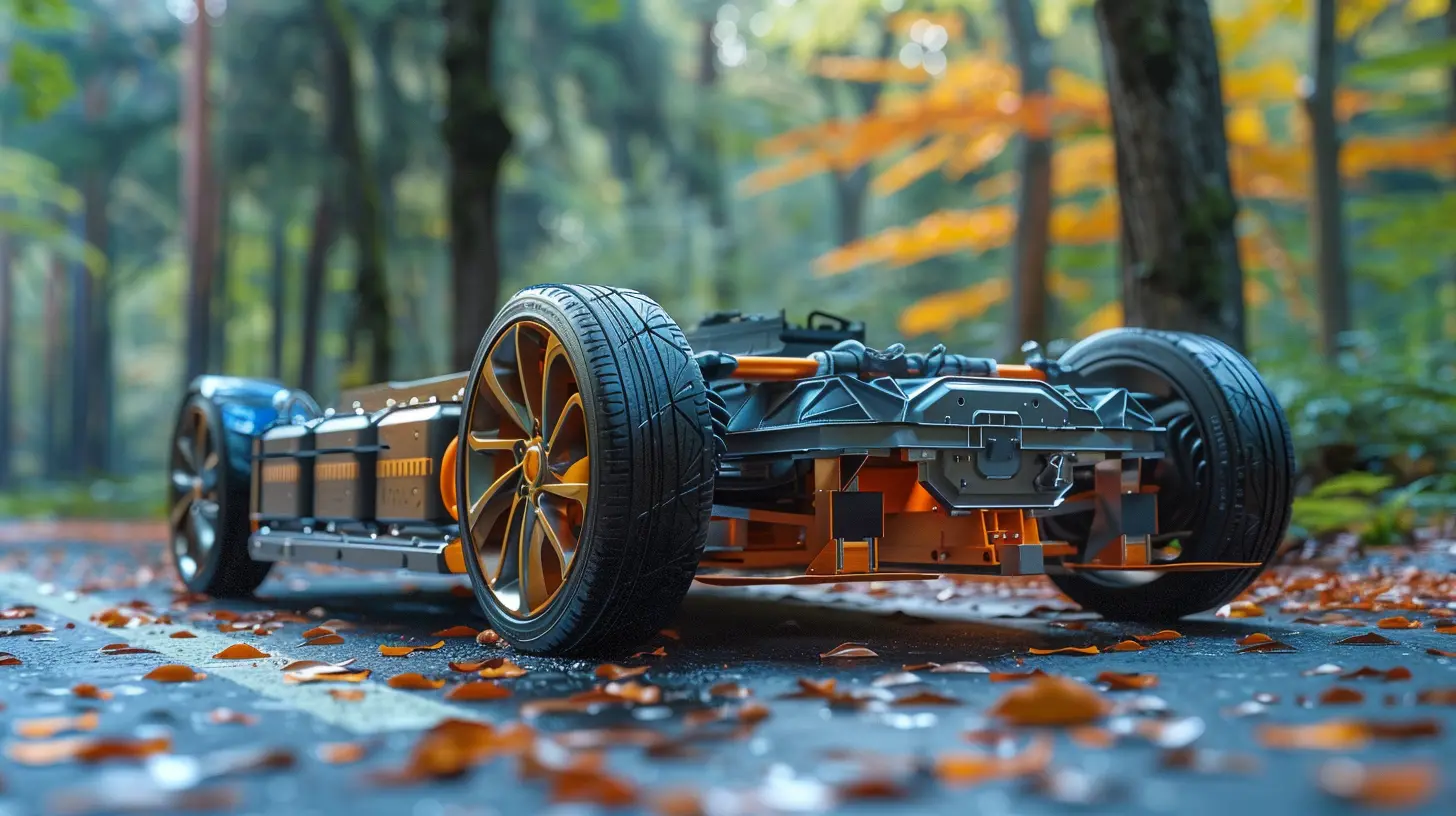What Are Solid-State Batteries and Why Do They Matter for EVs?
9 November 2025
Let’s be real—electric vehicles (EVs) are no longer a futuristic concept. They’re here, and they’re rapidly taking over our roads. But despite all the cool tech packed into these clean, quiet machines, there’s one thing holding them back: the battery. That’s where solid-state batteries come into play.
You’ve probably heard the buzz around them, and maybe you’ve asked yourself, “What’s the big deal?” Well, pull up a chair because we’re diving into what solid-state batteries are, how they work, and why they could be a total game-changer for EVs.
What Is a Solid-State Battery, Anyway?
First off, let’s break down the basics.A solid-state battery is just like the batteries we use now—but better. Most of the batteries in EVs today are lithium-ion, and they use a liquid or gel-like substance called an electrolyte to move ions back and forth between the two terminals: the anode and cathode.
A solid-state battery swaps out that liquid for a solid material—hence the name. This small switch makes a huge difference in safety, size, capacity, and maybe even how fast your EV charges.
Think of it like the difference between a tube full of water and one filled with metal. They both conduct things, but one is more stable, lasts longer, and is less likely to leak or catch fire.
Why Are Solid-State Batteries Getting So Much Attention?
There are four big reasons solid-state batteries are making headlines—and trust me, they’re all massive for EVs.1. Safety First—No More Fire Risks
One of the biggest challenges with current lithium-ion batteries is safety. Because of the liquid electrolyte, they’re flammable. You’ve probably seen videos of EVs catching fire after accidents. Scary stuff.Solid-state batteries use non-flammable solids instead, which means way fewer chances of overheating or catching fire. This could make EVs safer in general, especially in high-impact collisions.
2. More Energy Packed Into Less Space
Here’s where things get really exciting: energy density. Solid-state batteries can hold a lot more energy in the same amount of space. Why does that matter? Because more energy = more range.Imagine driving 600 miles on a single charge instead of the 250–300 miles we see today. That kind of range would blow "range anxiety" out of the water. For long-distance travelers, commuters, and road trippers, that’s a game-changer.
3. Faster Charging—Yes, Please!
Nobody likes waiting around for their phone to charge, let alone their car. Solid-state batteries could drastically reduce charging times—think 80% charge in under 15 minutes.That’s almost as fast as filling up a gas tank. And if charging stations become as widespread and convenient as gas stations, that removes another barrier to EV adoption.
4. Longer Battery Life
Over time, all batteries degrade. If you've had a smartphone for over two years, you’ve probably noticed it doesn’t hold a charge like it used to.Solid-state batteries degrade much more slowly, offering a longer lifespan. That means fewer battery replacements, which helps both your wallet and the environment.
How Do Solid-State Batteries Work?
Let’s get nerdy for just a minute—but don’t worry, I’ll keep it light.In any battery, ions flow from the anode to the cathode through the electrolyte when you’re using energy, and in reverse when you’re charging. That electrolyte is usually a liquid, which has its own problems: leakage, flammability, and limitations on energy density.
Solid-state batteries trade that liquid for a solid electrolyte. This material can be made from ceramics, glass, or even specialized polymers, depending on the design. The solid electrolyte is more stable and allows for the use of different anode materials—like lithium metal—which boost performance significantly.
To make it simple: it’s like replacing a leaky, fragile straw with a sturdy metal pipe. Same idea, much better execution.
What's Holding Solid-State Batteries Back?
So if they’re so great, why don’t all EVs use solid-state batteries already?Here’s the truth: solid-state tech is still in the works.
There are a few major hurdles:
- Cost: Right now, solid-state batteries are expensive to produce. The materials and manufacturing processes aren’t yet optimized for mass production.
- Scalability: Making a prototype in a lab is one thing. Producing millions of solid-state batteries for mass-market EVs is a whole different beast.
- Durability Challenges: Even though they degrade more slowly, some solid electrolytes are brittle. They can crack during charge/discharge cycles, which needs to be solved for long-term use.
That said, companies like Toyota, QuantumScape, Samsung, and even BMW are pouring billions into this tech. It’s not a matter of if—it’s a matter of when.
Who’s Leading the Charge?
Pun intended.Several companies and startups are investing heavily in solid-state batteries. Here’s a quick roundup:
Toyota
Toyota has been researching solid-state batteries for years and aims to be one of the first automakers to bring them to market. They’ve promised a prototype vehicle with solid-state tech around 2025.QuantumScape
Backed by Volkswagen, this U.S.-based startup is one of the most talked-about names in the solid-state space. Their batteries are showing promise in terms of energy density and fast charging.Samsung SDI
Samsung is working on solid-state batteries not just for EVs, but also for consumer electronics. They’ve showcased prototypes with high endurance and safety features.Solid Power
Another key player, Solid Power partners with Ford and BMW and has begun pilot production. They focus on using sulfide-based solid electrolytes, which are stable and conductive.These names might sound like the Avengers of battery tech—and in some ways, they kind of are.
Why Solid-State Batteries Matter for the Future of EVs
Let’s zoom out for a second. Switching from gas-powered cars to EVs isn’t just about cool tech or bragging rights. It’s about the planet. It’s about sustainability. And it’s about creating cleaner, more efficient ways to get from point A to point B.Solid-state batteries could:
- Make EVs more efficient and reliable
- Reduce environmental waste from battery replacements
- Boost performance without compromising safety
- Make owning an EV more convenient and less expensive long-term
They hold the key to breaking past the final few barriers of EV adoption—and once those fall, it’s hard to imagine a world where gas-powered vehicles won’t feel completely outdated.
Will Solid-State Batteries Replace Lithium-Ion?
Eventually—yes. But not overnight.Most experts agree that lithium-ion batteries will coexist with solid-state tech for at least the next 5–10 years. As manufacturing gets cheaper and more reliable, we’ll start seeing more EVs with solid-state options, especially in high-end or performance models.
In time, solid-state batteries could become the gold standard not just for cars, but for phones, laptops, and even grid storage.
So, if you’re thinking of getting an EV soon and feel tempted to wait for solid-state tech—don’t. Today’s EVs with lithium-ion batteries are still excellent. But it’s good to know that an even better technology is on the horizon.
The Bottom Line
Solid-state batteries aren’t just a minor tweak—they’re a leap forward. They represent the next generation of energy storage that could make EVs safer, last longer, go further, and charge faster.Sure, the tech isn’t ready for prime time yet, but the progress is real, and the potential is enormous. Whether you're a tech enthusiast, a sustainability advocate, or simply someone who wants to get the most out of your next car, solid-state batteries are something to keep on your radar.
EVs are already changing the way we drive—and solid-state batteries could supercharge that revolution.
all images in this post were generated using AI tools
Category:
Electric VehiclesAuthor:

Vincent Hubbard
Discussion
rate this article
1 comments
Zylith Romero
Great article! Solid-state batteries could revolutionize EV technology with their higher energy density and safety features. It’s exciting to see how they may address current limitations in lithium-ion batteries, potentially leading to longer ranges and quicker charging times for electric vehicles.
November 9, 2025 at 5:28 AM

Vincent Hubbard
Thank you for your feedback! We're excited about the potential of solid-state batteries to enhance EV technology and address key challenges.


